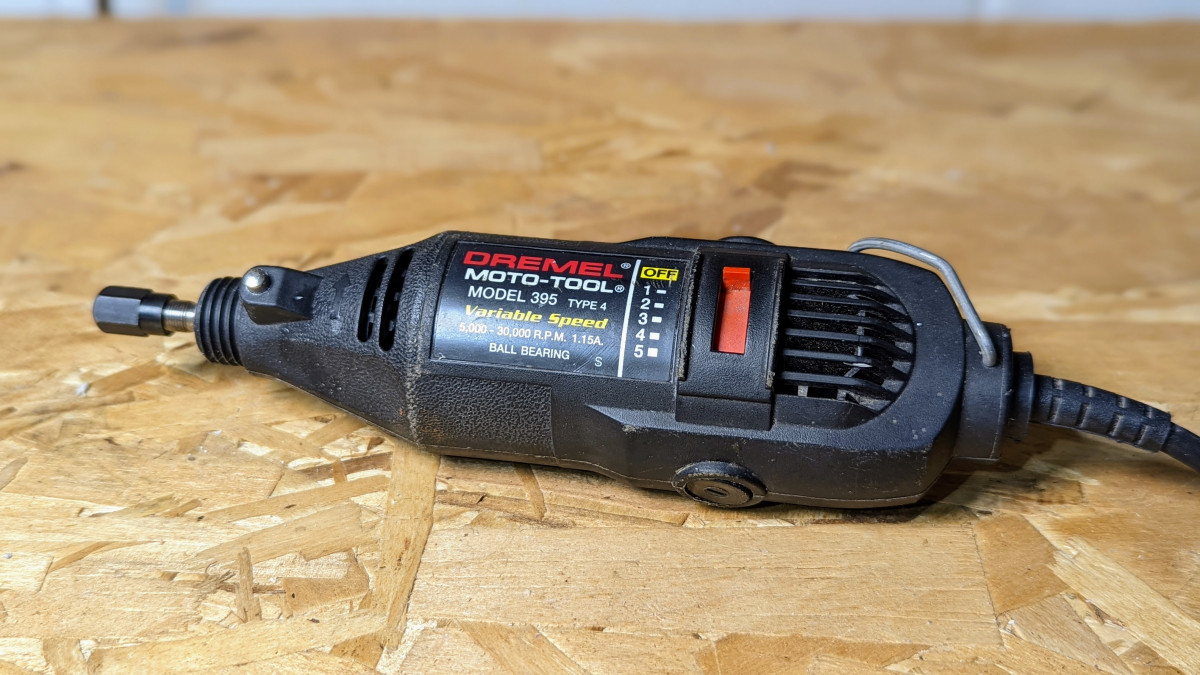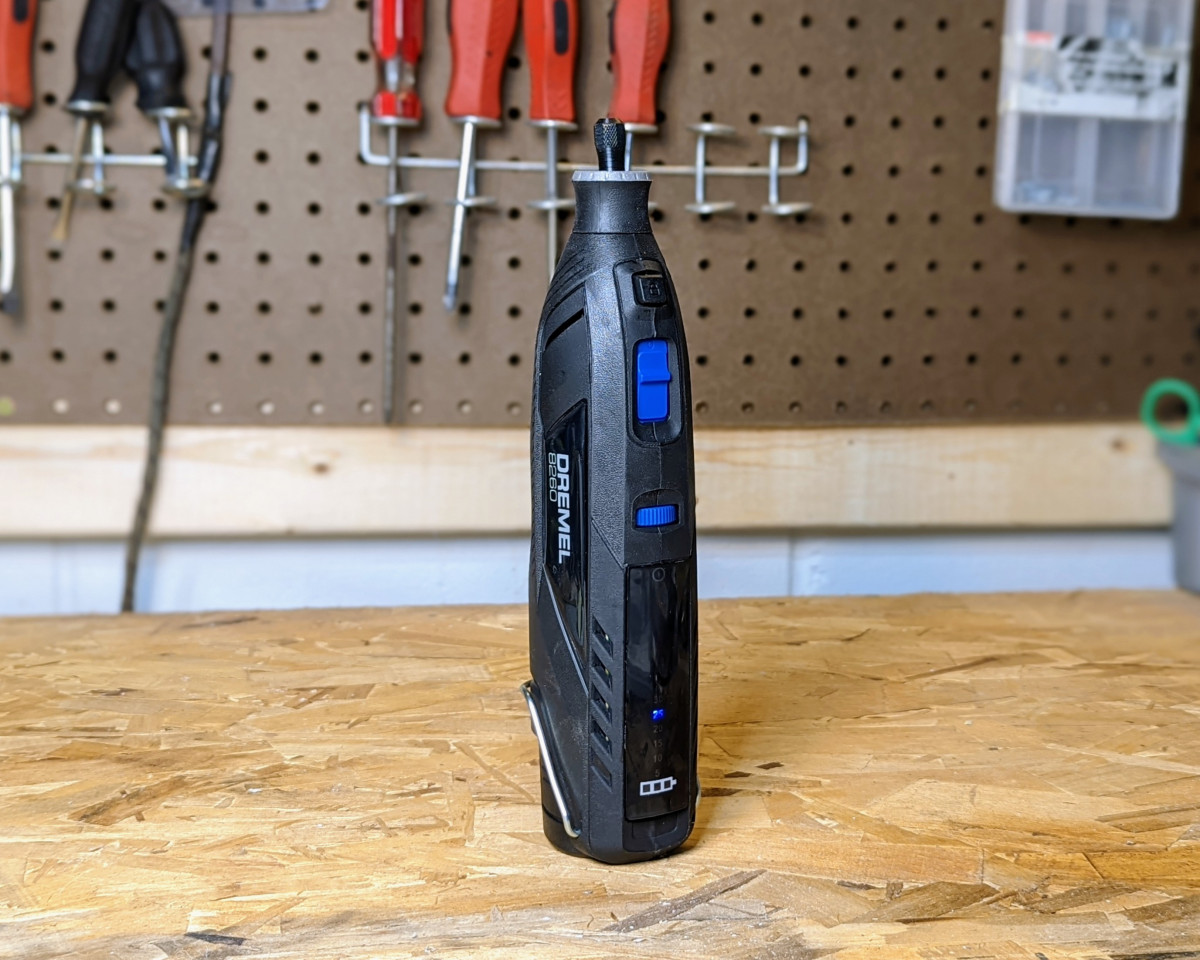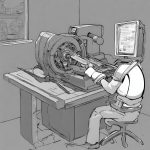We may receive a commission when you use our affiliate links. However, this does not impact our recommendations.
 How does Dremel’s newest rotary tool stack up to one from 30 years ago?
How does Dremel’s newest rotary tool stack up to one from 30 years ago?
Tool: 8260 Cordless Smart Rotary Tool Shop Now
Manufacturer: Dremel
MSRP: $169 (includes tool, battery, and carrying case)
When evaluating a new tool, there are two paths often taken- how does the tool function for its intended purpose, and how does it improve upon what came before it? When looking at the former, the new 8260 Cordless Smart Rotary Tool scores a perfect 10. It’s powerful, the battery life exceeds expectations, and the app is well designed and thoughtful. Looking at the latter- specifically comparing it to a circa-1992 Dremel 395 I “borrowed” from my Dad in college (sorry Dad!) do we start to find a more interesting narrative of progress.
 Interestingly, the tools are just as similar as they are different. Both are made of black plastic (though the 8260 has a more rubberized texture), with a loop on the end to hang if desired. Both feature variable speed control between 5000 and 30000 rpm. Both tools share the same extensive library of attachments and bits. And the 8260 weighs only 3 ounces more than the 395 with the battery attached.
Interestingly, the tools are just as similar as they are different. Both are made of black plastic (though the 8260 has a more rubberized texture), with a loop on the end to hang if desired. Both feature variable speed control between 5000 and 30000 rpm. Both tools share the same extensive library of attachments and bits. And the 8260 weighs only 3 ounces more than the 395 with the battery attached.
The differences are quite striking though. The 8260 is battery-powered and brushless, meaning that setup is effortless and maintenance is effectively nonexistent. The 395 is compact and very comfortable to hold in your hand for detailed engraving work, while the 8260 is large- almost too large. If you’re going to be doing a lot of small detail work, you’ll want to invest in a Flex Shaft attachment. Or, if you already have one, it will work fine with either tool, which is quite a commitment from Dremel given 30 years to tinker with the formula.

The 8260 is quite a bit larger.
The 8260 feels quite a bit more powerful than its forefather, and though I’m certain age plays into that, Dremel does claim it’s more powerful than its modern plug-in siblings. While both tools share the same RPM range, the 395 is infinitely adjustable, though nearly impossible to actually tell where it’s set with only a sticker to measure. The 8260 can be adjusted in exact 5000 rpm increments and can be changed on the tool or in the app.
That’s right, there’s an app, and it’s quite useful. Input the material, task, and bit you’re using, and it will give you a suggested RPM range. The app also monitors battery life and the operating temp of the tool and battery so you don’t risk overheating during heavy-duty tasks. It even helps you choose the right bit for a task if you’re not sure. While Dremel could have cut corners to make a “smart” tool, they seem to have invested the capital to make a tool that actually lives up to the smart designation.
So, does the 8260 actually represent 30 years of advancement in tools and technology? I’d say it does- it is an improvement on the 395 in ways both measurable and not, and the smart features make it more versatile and useful for everyday use. And while it’s too early to tell if one of my kids will be comparing this to the Dremel 16485 in 30 years, it does mean that my Dad is finally getting his old tool back.
Here are some supplies and tools we find essential in our everyday work around the shop. We may receive a commission from sales referred by our links; however, we have carefully selected these products for their usefulness and quality.



 How does Dremel’s newest rotary tool stack up to one from 30 years ago?
How does Dremel’s newest rotary tool stack up to one from 30 years ago?





How is it compared to the Bosch 12v rotary tool (parent company of Dremel)? I’m yet to try the 8260, but found the far better than the 8220. The batteries for the 8220 were a big issue to me.
I haven’t tested the Bosch, but they both appear to be using the same standard Bosch 12v battery now, instead of the older style Dremel was using before.